site search
online catalog
HORSTMANN M1840 SABER AND SCABBARD: EMERSON AND SILVER KEYSTONE BLADE

Hover to zoom

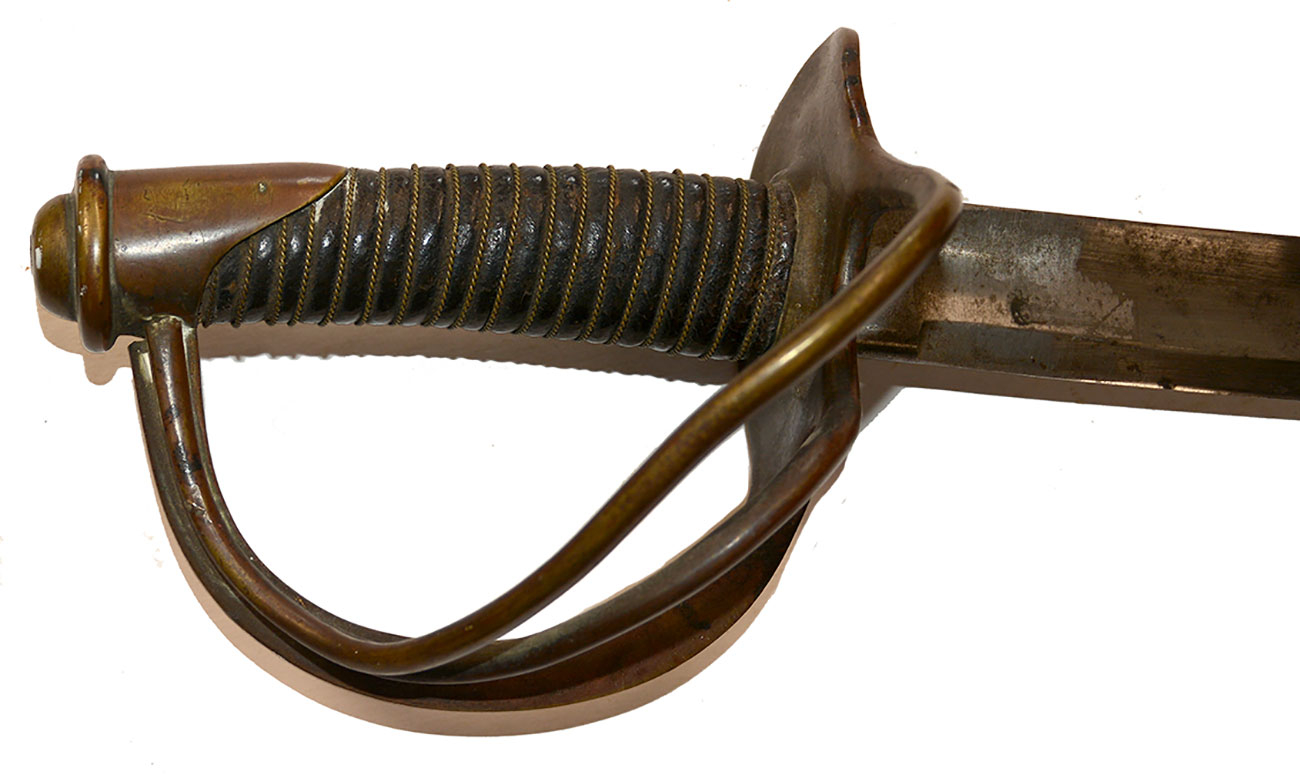
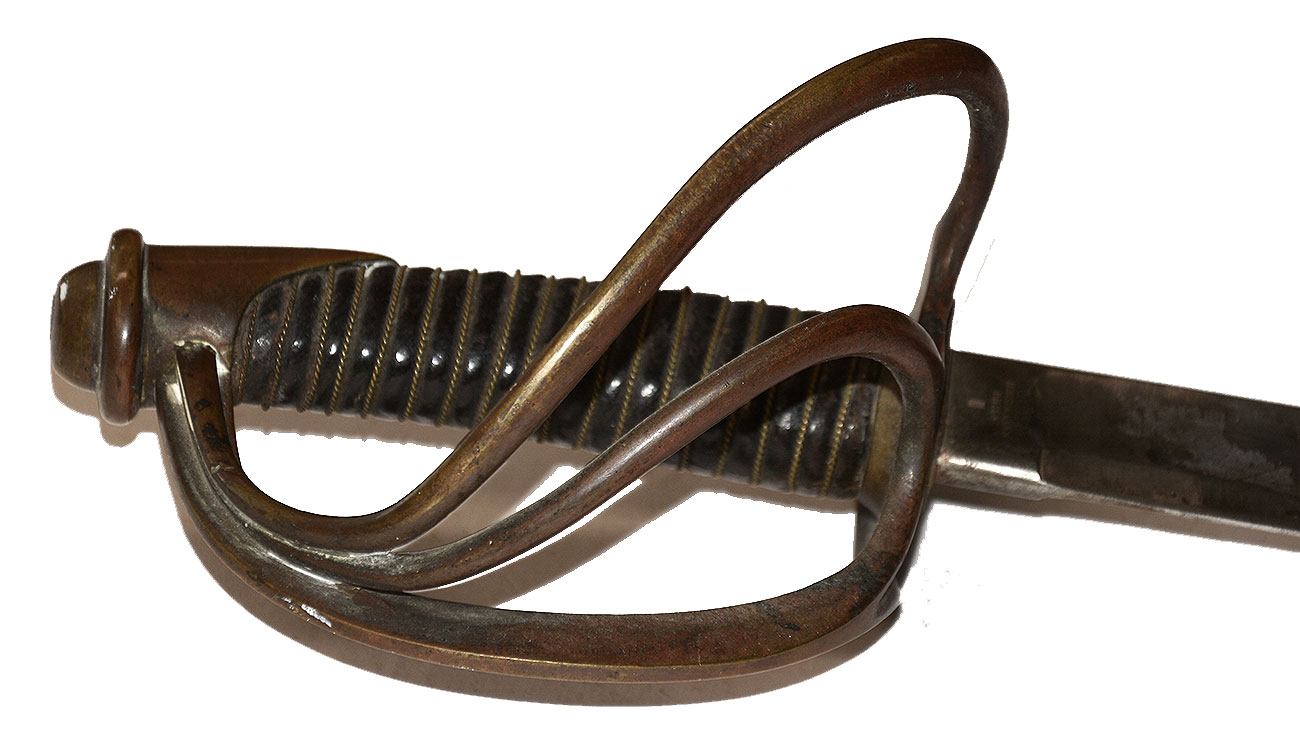
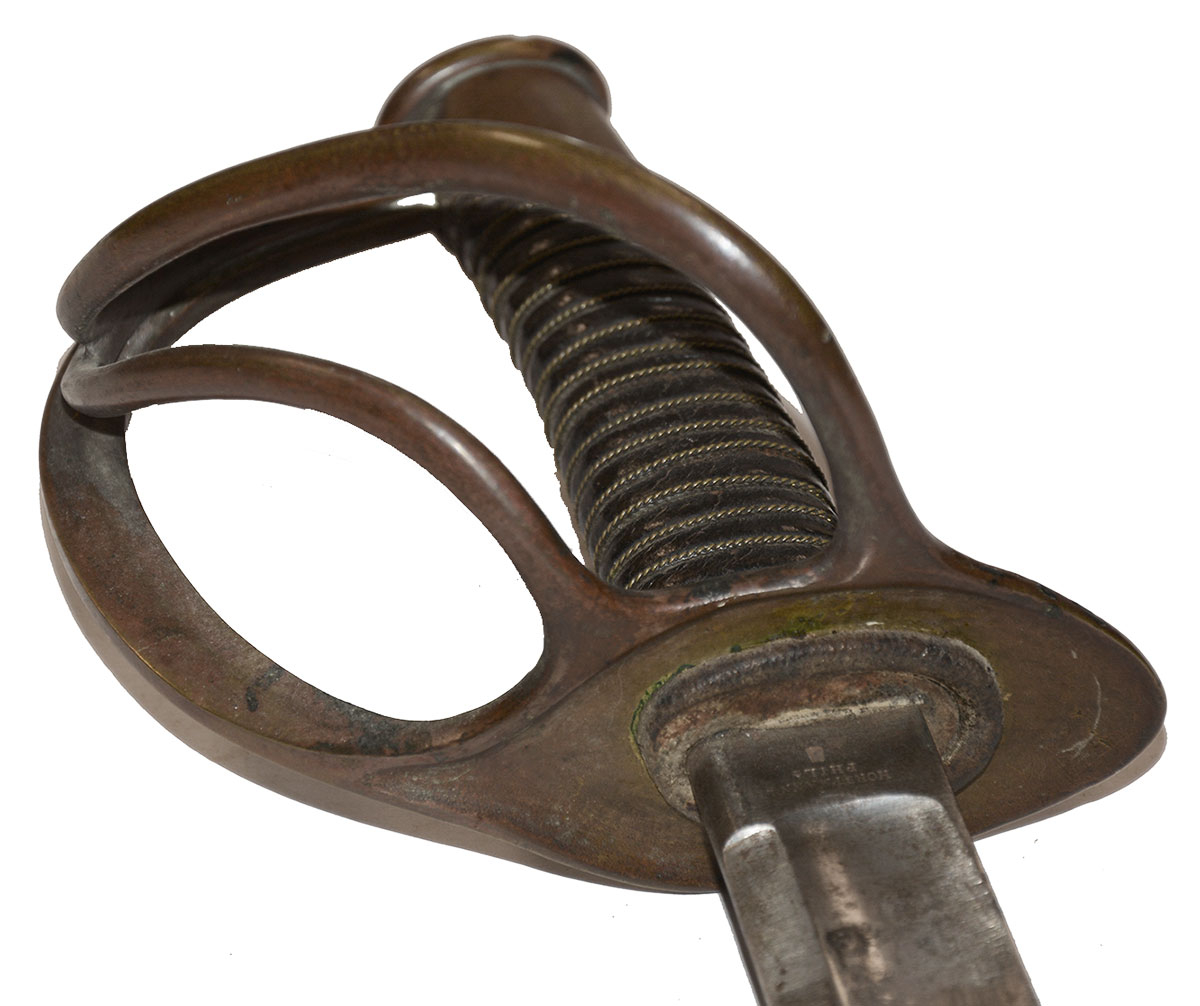

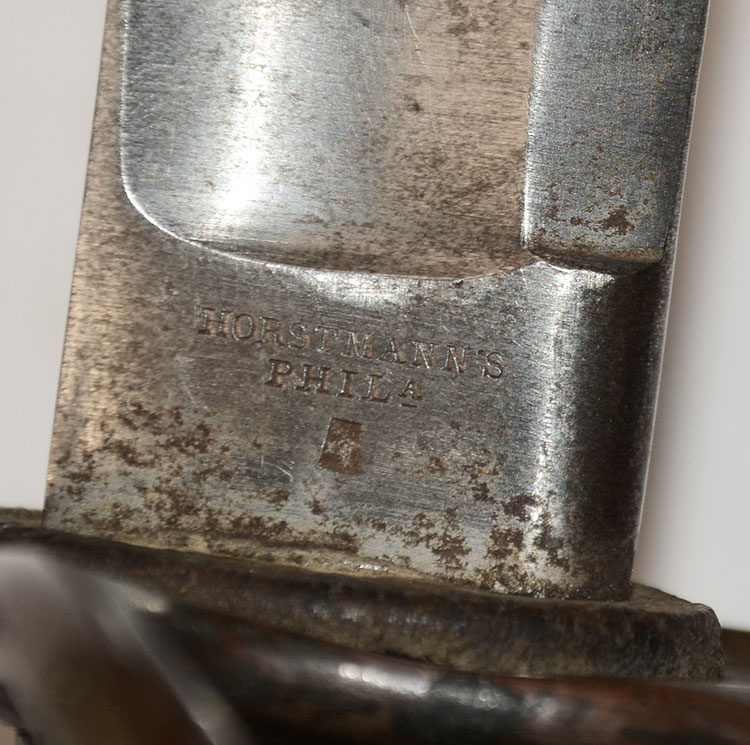
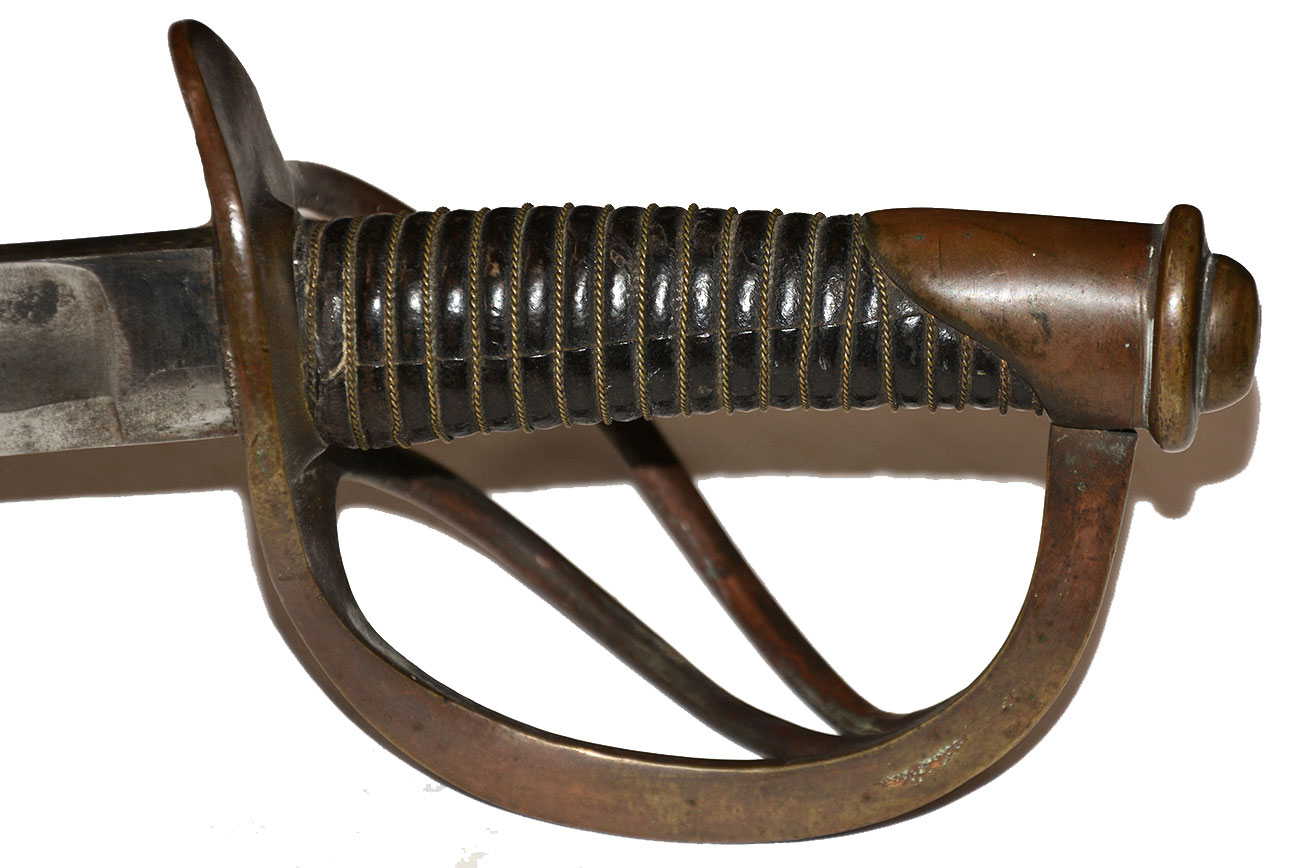

$795.00 SOLD
Quantity Available: None
Item Code: 2025-241
James E. Emerson of Emerson and Silver really managed to stick it to the Horstmann firm in his testimony to the Holt Owens Commission on Ordnance and Ordnance Stores in 1862, testifying as a disinterested party of course, since he himself did not have any US contracts for swords, but dropping the fact that his firm had supplied 5,000 sword blades to a unnamed Philadelphia company and offering some observations on appropriate pricing, all of which ended up effectively cutting out the middleman for him and gaining substantial US contracts of his own.
Horstmann was, of course, the company in question, and this is one of their sabers made using an Emerson and Silver blade. Horstmann supplied cavalry sabers to the US government in three forms: the British 1821; the US M1840; and, the US M1860. This is one of their 1840 patterns, which Thillmann further divides into three types, and falls into his Type-1, though with a variant blade marking and conventional rounded-bottom rather than flat-bottom to the drag blade. The condition is excellent. The hilt has an untouched, aged patina, and has no bends, cracks, or breaks. The grip is excellent, showing a nice surface and deep black color to the leather. The double twist brass binding wire makes 17 turns around the grip, which is in the 1840 pattern, without the swell in the middle characteristic of the 1860 pattern, and is made in the American fashion with a wood core turned to create ridges and grooves rather than using flat wood bound with cord to create the ridges. The thick bridle leather blade pad is in place on the underside of the the guard. The blade is 35-1/2” overall, 1-1/4” wide at the guard and uses a flat back in the 1840 fashion. The blade is excellent, with good edge and point, and smooth metal overall in the bright. The reverse ricasso is blank. The obverse is clearly stamped “HORSTMANN’S / PHILA over a small deeply struck keystone-shaped mark. The scabbard is excellent as well, with even brown color and good surface, and the throat, which is not screw fastened, ring bands and carrying rings, and drag all in place, showing just some rubs to the drag, and no dings or dents.
For details on this pattern see Thillmann, CW Cavalry and Artillery Sabers, pages 208ff in his chapter on Horstmann, and also his chapter on Emerson and Silver, which we summarize as follows. These sabers were among those assembled by Horstmann from 5,000 blades purchased from Emerson and Silver and using hilts and scabbards made in house or by other local suppliers, rather than from European suppliers. The “Horstmann’s / Phila” blade marking is one of those he records on these sabers on p.209, and the style of hilt and grip, etc., all fit with his description of his “Type-1” with two exceptions. Thillmann shows blade stamps using what he describes as deep “wedge” or “railroad spike” in addition to the firm name, a mark he attributes to Emerson and Silver. This saber, however, uses the much plainer keystone shaped stamp also attributed to Emerson and Silver and seems to play upon their factory named the “Keystone Works.” It also uses a more conventional round shape to the bottom of the drag blade rather than the relatively flat one illustrated by Thillmann.
This is a very good looking, untouched Civil War cavalry saber, with an unusual blade marking for the type and carrying a lot of behind-the-scenes history in the suddenly very profitable arms business during the Civil War. [sr][ph:L]
~~~~~~~~~~~~~~~~~~~~~~~~~~~~~~~~~~~
THIS ITEM, AS WITH ALL OTHER ITEMS AVAILABLE ON OUR WEB SITE,
MAY BE PURCHASED THROUGH OUR LAYAWAY PROGRAM.
CLICK HERE FOR OUR POLICIES AND TERMS.
THANK YOU!
Inquire About HORSTMANN M1840 SABER AND SCABBARD: EMERSON AND SILVER KEYSTONE BLADE
Most Popular
Historical Firearms Stolen From The National Civil War Museum In Harrisburg, Pa »
Theft From Gravesite Of Gen. John Reynolds »
Selection Of Unframed Prints By Don Troiani »
Fine Condition Brass Infantry Bugle Insignia »
featured item
THE NORFOLK LIGHT ARTILLERY BLUES! IMPRESSIVE HALF PLATE DAGUERREOTYPE BY WHITEHURST IN A WONDERFUL WHITEHURST CASE
This image is not only mounted with a Whitehurst marked mat, but has a full thermoplastic figural case with a purple velvet facing pad embossed with a large eagle flourishing a ribbon reading “J.H. Whitehurst” and holding a shield or plaque with… (1138-1799). Learn More »


